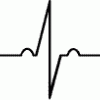If there was something which could improve the health of the myelin and/or increase the availibility of the materials needed to construct myelin it would probably be a powerful nootropic. And there seems to be something which could do this-nervonic acid. The only question is whether or not it crosses the blood brain barrier.
http://en.wikipedia....c_acid</strong>
Nervonic acid is a monounsaturated omega-9 fatty acid. Nervonic acid has been identified as important in the biosynthesis of nerve cell myelin.[2] It is found in the sphingolipids of white matter in human brain.
Nervonic acid is used in the treatment of disorders involving demyelination, such as adrenoleukodystrophy and multiple sclerosis where there is a decreased level of nervonic acid in sphingolipids.[3]
Use of nervonic acid and long chain fatty acids for the treatment of demyelinating disorders
Unfourtunetly:
from: http://en.wikipedia.org/wiki/KetosisThe brain cannot use long-chain fatty acids for energy because only medium-chain fatty acids (which are scarce in most foods) can cross the blood-brain barrier.[1]
However I also read this:
(nervonic acid is monounsaturated) from: http://www.springerl...373640kr470h767It has already been established that the blood-brain barrier is readily crossed by unsaturated fatty acids, while saturated fatty acid transport appears to be protein mediated.
Also, nervonic acid is a lipid and is thus hydrophobic and has a molecular weight of 366 g/mol, and according to http://molinterv.asp...ent/3/2/90.full nervonic acid should cross the BBB:
Only a small class of drugs—small molecules with high lipid solubility and a low molecular mass (Mr ) of < 400–500 g/mol—actually cross the BBB
Anyone know for sure whether or not nervonic acid crosses the BBB?
Edited by nanothan, 31 December 2010 - 09:59 PM.






















































